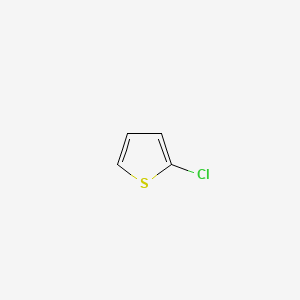-
Categories
-
Pharmaceutical Intermediates
-
Active Pharmaceutical Ingredients
-
Food Additives
- Industrial Coatings
- Agrochemicals
- Dyes and Pigments
- Surfactant
- Flavors and Fragrances
- Chemical Reagents
- Catalyst and Auxiliary
- Natural Products
- Inorganic Chemistry
-
Organic Chemistry
-
Biochemical Engineering
- Analytical Chemistry
- Cosmetic Ingredient
-
Pharmaceutical Intermediates
Promotion
ECHEMI Mall
Wholesale
Weekly Price
Exhibition
News
-
Trade Service
7-Nitroisoquinoline, also known as nitroanthranilic acid, is a chemical compound that is used in the production of dyes, pharmaceuticals, and other chemical products.
It is known for its deep red color and is commonly used as a dye for fabrics and other materials.
However, the use of 7-Nitroisoquinoline has raised concerns about its safety in the chemical industry due to its potential toxicity and flammability.
In this article, we will explore the safety concerns surrounding 7-Nitroisoquinoline and the measures that can be taken to mitigate these risks in the chemical industry.
The main safety concerns surrounding 7-Nitroisoquinoline are its toxicity and flammability.
When ingested, inhaled, or absorbed through the skin, 7-Nitroisoquinoline can cause a range of health problems, including skin irritation, respiratory distress, and even death.
Prolonged exposure to the chemical can also cause long-term health effects, such as cancer and damage to the nervous system.
In addition to its toxicity, 7-Nitroisoquinoline is also highly flammable and can easily ignite when exposed to heat, sparks, or other sources of ignition.
This makes it a significant fire hazard in the chemical industry, particularly in areas where the chemical is stored or used in large quantities.
To mitigate the safety risks associated with 7-Nitroisoquinoline, it is important for chemical companies to take a number of measures.
Firstly, companies must ensure that their employees are adequately trained in the safe handling and use of the chemical, including wearing appropriate protective gear such as gloves, goggles, and masks.
This training should be ongoing and regularly updated to reflect any new safety information and best practices.
Secondly, companies must implement appropriate safety protocols to minimize the risk of fire or explosion.
This includes ensuring that the chemical is stored in a secure, fire-resistant storage unit, away from any sources of heat or ignition.
Companies should also have a well-defined emergency response plan in place in case of a spill or leak, including procedures for evacuating the area and contacting emergency services.
Thirdly, companies must take steps to minimize the risk of exposure to the chemical.
This includes isolating the chemical from other chemicals and limiting the amount of time that employees are exposed to it.
Companies should also provide appropriate ventilation and air filtration systems to minimize the risk of inhalation.
Fourthly, companies must ensure that they comply with all relevant regulations and safety standards, including those set by national and international regulatory bodies.
This includes reporting any incidents or accidents involving the chemical, as well as maintaining accurate records of the chemical's storage, use, and disposal.
Finally, companies must be transparent about their use of 7-Nitroisoquinoline and take steps to communicate the potential risks associated with the chemical to their employees, customers, and the wider community.
This includes providing clear instructions on the safe handling and use of the chemical, as well as disclosing any potential health risks to those who may come into contact with it.
In conclusion, 7-Nitroisoquinoline is a chemical compound that poses significant safety risks to those who handle it, particularly in the chemical industry.
To mitigate these risks, chemical companies must take a number of measures, including providing appropriate training and safety protocols, minimizing exposure to the chemical, complying with regulations, and being transparent about the potential risks associated with the chemical.
By taking these steps, companies can ensure the safety of their employees and the wider community, and minimize the risk of accidents or incidents involving 7-Nitroisoquinoline.




![trans-2-[4-(Trifluoromethyl)phenyl]vinylboronic acid](https://file.echemi.com/fileManage/upload/goodpicture/20210823/m20210823213511682.jpg)


